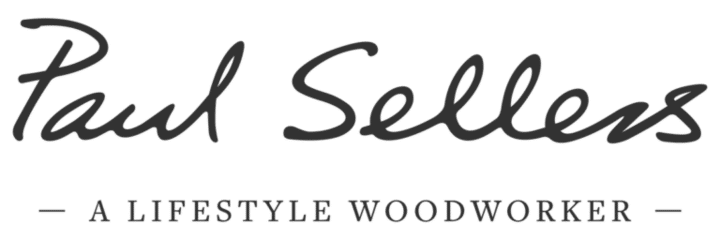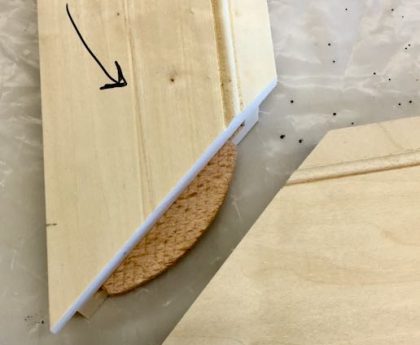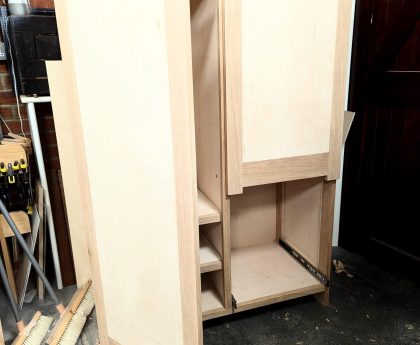Honest questions deserve honest answers. It’s when questions are partly or wholly disingenuous and thereby baited that they raise flags and cause agitation. Thankfully I only get one in a hundred that provoke the worst in me. The wonderful thing about genuine questions is that they often bring out the greater reflectiveness in me. That said, even the disingenuous questions can answer the questions others might have but be unable or unwilling to articulate on a more public platform. It’s also important to remember that the most difficult questions for us to answer are the ones never asked.
I have tried to answer statements made by others who say things like ‘Paul Sellers hates machines!‘ or ‘Paul Sellers never uses machines.‘ And when did I actually say never use sandpaper, never use micro bevels or there is, “Only Paul’s way.” As in only my way will work and “Paul’s way is the high way.” and things like that? Well, usually it has nothing to do with anything I have said but it can be more what I don’t do or don’t usually do. For instance, I don’t use two bevels of sharpening no matter what you call and neither do I advocate separate sheets of abrasive film or wet and dry unless it is to advise people starting out as a temporary measure. This is all because I don’t really sell things. The advocates for many methods are almost always selling something alongside their name as a recognised guru. Things like holders for getting the right angle on tools, sawing guides, special knobs on tools or this kind of extra thick iron or cap irons (chip breakers USA). because I don’t use this or that can be a point of accusation. And accusations can become discriminatory. The truth is I don’t generally use power equipment because I personally choose not to. Do I like planing rough-sawn wood smooth, true and dead flat and then thickness planing it with a bench plane? Well, sometimes I do and sometimes not or even not at all. For me, it’s the same issue as making myself cycle for 20 miles most days and then the more when it’s raining, cold or windy going to and from work, to a cafe to write or to do my personal shopping. It’s just plain good for me and the exercise keeps me fit and healthy, keeps my blood sugars down and it wakes me up when I start and end my days. Planing up panels for four hours as I did today (after my shorter cycle ride of 12 miles) really got my heart pumping over a prolonged period. I did not always feel this way about exercise and running is not too good for anybody long term and certainly not three times in a given day. I split my morning and evening rides with a shorter six-mile ride instead of eating lunch. These are the things I do have a better life.
So how did this all get started? Well, it was with what I saw as a genuine question accompanied by a statement. And I take
Q:
So if the No. 80 and the card scraper are problematic on soft woods – as is the consensus opinion – how does Mr. Sellers deal with tear out in these woods encountered during smooth planing? I know he is not fond of using sandpaper to repair issues like this. But is there an alternative?
A:
Stephen, Thank you for giving me this question. Your saying, “I know he is not fond of using sandpaper to repair issues like this.” is more likely to give others the wrong impression even though I know that this is not your intention so this will give me a good opportunity to help others understand the real issues and my position on them. I hope that that’s okay. Firstly, on the issue of scraping soft woods (as distinct from softwoods): You can use scrapers on some if not most soft-grained woods whether hardwoods or softwoods. That said, they always work on hard or dense-grained woods and are perhaps less predictable on the soft ones. If you do want or need to scrape softer woods, you must be prepared to sharpen and resharpen far beyond regularly and even when you don’t detect any dullness in the cutting edge. What am I saying? I’m saying even soft woods like pines, firs, spruce and such will allow a sharp scraper to refine their fibres. But you must be diligent to keep the cutting edges refined. Looking at the consensus does not read Paul Sellers in there really.
I might offer that 99% of woodworkers have no concept of card or #80 scrapers let alone how to sharpen them or use them. I will indeed resharpen and scrape difficult areas in soft woods. But I mastered the art of switching my plane in different stroke directions as I work awkward areas and am used to refining even difficult grains using my smoothing plane in short, multidirectional swipes with lift-offs on short sections with the very finest of settings. Another technique I have videoed on is stuffing shavings into the throat of the plane with the left hand while swiping using the plane with the right. I have saved many a troubling spot using this technique which was passed down to me as a boy in my apprenticeship by the men I worked with. As to my not being fond of using sandpaper: I use sandpaper on all of my projects but not as others do automatically to take out poor hand work or planing and scraping and machine marks. That said, it might well be the only answer for some woodworkers unused to hand tool work or, as does happen, where the complexity of grain structure is such that you can eliminate a lot of really hard work. My countering this over the years has been purely to equip people, woodworkers, to master the art of planing rather than automatically reaching for a belt sander and random orbit sander which is what was happening in the lives of almost every woodworker I ever met. I think my using hand planes eliminates about 98%+ of reliance on sanding to achieve what is a better finish using planes. So why do people rely on power sanders? Well, it’s because boards passed through a power planer were left with the telltale power-planer stripes going across the grain that would be highlighted when paint of varnish was applied. If you are a machinist woodworker, you have absolutely no choice but to invest in a helical cutter head to continue power planing alone with or to belt sand and then random-orbit sand to take out any power-planer and sanding marks. The alternative would be to scrape and then sand usually. This, of course, assumes that all woodworkers have access to such specialist power equipment when at least half (if not much more) of the more global audience I reach out to do not. For such soft woods, I rely more on a card scraper than the #80. Sharpening scrapers demands our patience because it is such an elongated process compared to plane sharpening. I do understand the reliance on power sanding and I am not at all reluctant to use such methods. `what I faced was the unbelief that people had in themselves that they could actually master the use of hand planes. Hence what you see in my videos is the realness of real woodworking and not just some guru standing in front of a camera after spending half an hour sharpening and setting a plane so he or she can take a few onion skin-shaving off of a strip of pristinely prepared wood –– totally unreal. The videos we make (now thousands of them) of me planing and scraping awkward grains I naturally encounter in my day-to-day of making projects, knots and surrounding grain too, are in the processes of building the projects we train people worldwide through. We insist on realness not staged shots.




